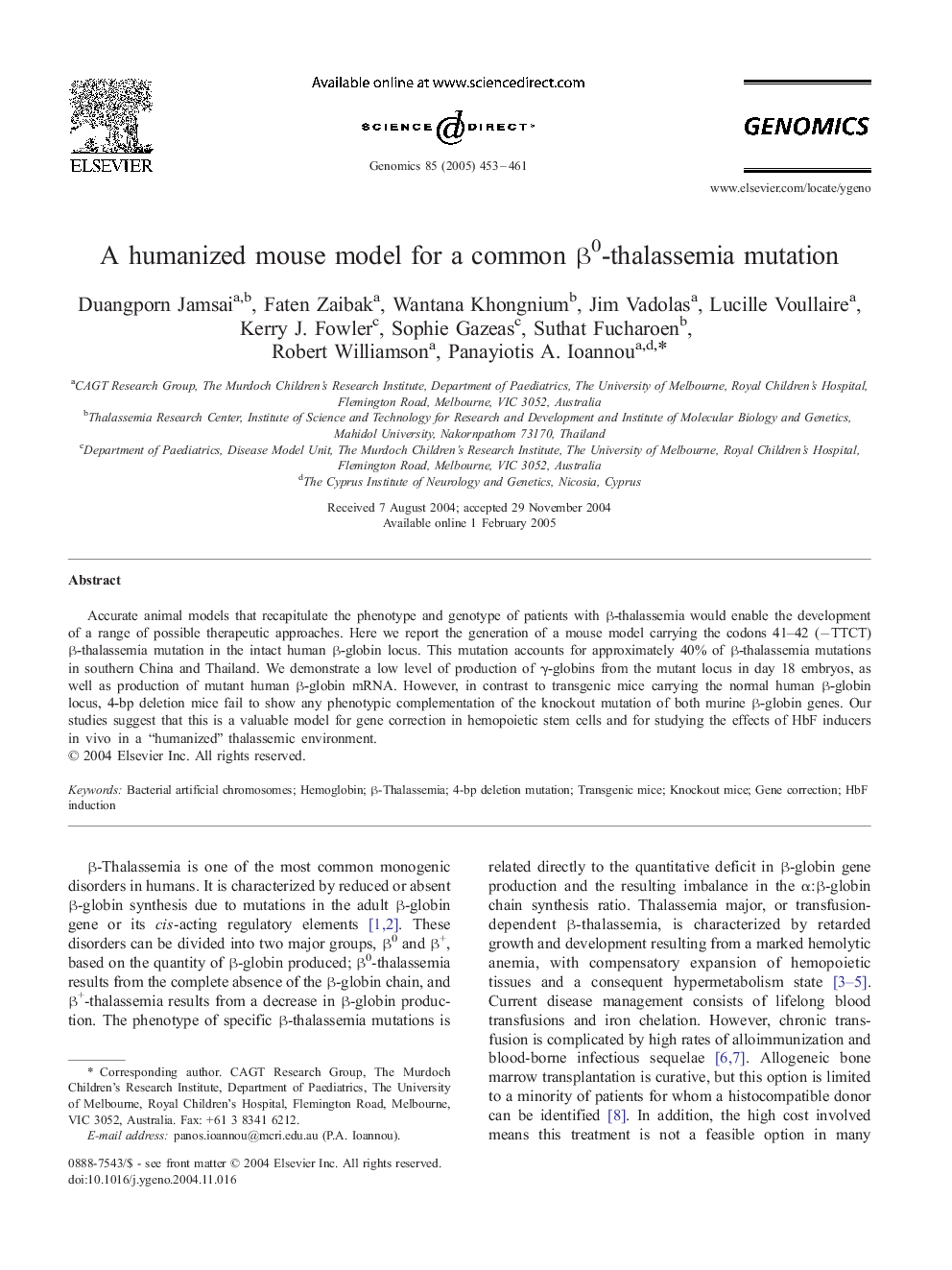| Article ID | Journal | Published Year | Pages | File Type |
|---|---|---|---|---|
| 9131971 | Genomics | 2005 | 9 Pages |
Abstract
Accurate animal models that recapitulate the phenotype and genotype of patients with β-thalassemia would enable the development of a range of possible therapeutic approaches. Here we report the generation of a mouse model carrying the codons 41-42 (âTTCT) β-thalassemia mutation in the intact human β-globin locus. This mutation accounts for approximately 40% of β-thalassemia mutations in southern China and Thailand. We demonstrate a low level of production of γ-globins from the mutant locus in day 18 embryos, as well as production of mutant human β-globin mRNA. However, in contrast to transgenic mice carrying the normal human β-globin locus, 4-bp deletion mice fail to show any phenotypic complementation of the knockout mutation of both murine β-globin genes. Our studies suggest that this is a valuable model for gene correction in hemopoietic stem cells and for studying the effects of HbF inducers in vivo in a “humanized” thalassemic environment.
Keywords
Related Topics
Life Sciences
Biochemistry, Genetics and Molecular Biology
Genetics
Authors
Duangporn Jamsai, Faten Zaibak, Wantana Khongnium, Jim Vadolas, Lucille Voullaire, Kerry J. Fowler, Sophie Gazeas, Suthat Fucharoen, Robert Williamson, Panayiotis A. Ioannou,
